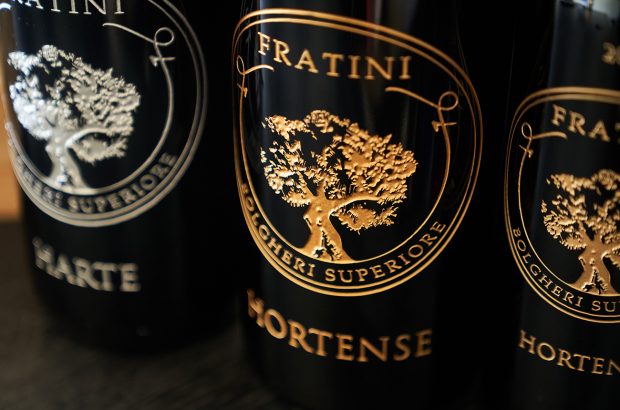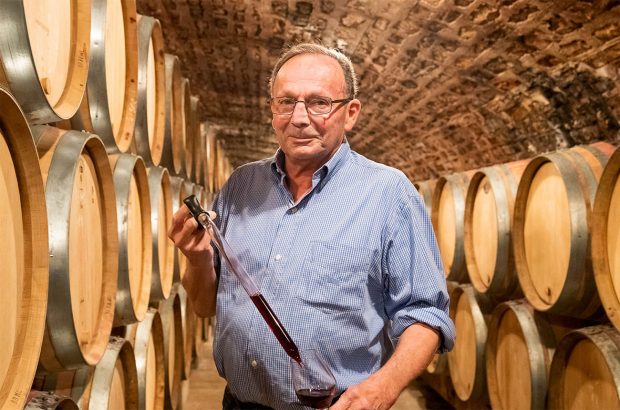Jane Masters MW
It is true natural corks have been used to seal bottles of wine for hundreds of years, but is that a valid reason to continue with a closure that is unreliable and often results in foul tasting wine? I think not.
So what’s the problem with the traditional natural cork? In short, corked wines – in other words wines that have developed a musty smell and taste. This unpleasant characteristic usually comes from a compound called 2,4,6 trichloroanisole – otherwise known as TCA – present in some corks. It is generally accepted in the trade that the incidence of corked wines is anything from two to 10%, however, the problems relating to natural cork do not end here. Crumbly corks may result in bits floating in the wine and hard or breaking corks can be exasperatingly difficult to extract. All this makes cork the most common cause of complaint and customer dissatisfaction in the wine trade.
Can the problem be solved? Cork stoppers are produced from bark stripped from cork oak trees that grow mainly in Spain and Portugal. The thickness of the bark is determined by the length of time the bark is left on the tree and, in general, it takes nine years to produce the thickness required for a standard cork. During all of that time the tree is exposed to variable weather conditions, insects and diseases, all of which influence the composition of the bark and lead to considerable variation in the raw material. Grading of the bark is done according to its look and physical properties. TCA, however, does not differentiate in this way and can be found in both the highest and lowest grades. There is currently no way to sort the TCA-containing bark out nor to eliminate its presence from the bark. It’s just pot luck. Although the problem has been around for years there are several reasons why it manifests itself and generates more attention and debate today than ever before. Over the years, demand for cork has increased, which has led to a greater proportion of lower grades being used. Winemaking techniques have been cleaned up and many of the faults that would have once masked cork taint have been eliminated. Wine styles too have changed, focusing more on fruit flavours and soft tannins, styles that are less tolerant of cork taint, and at the same time consumers have become more demanding and less tolerant of faulty products.
The enjoyment of a wine is a holistic experience: from the aesthetic look of the bottle, to the extraction and tactile feel of the closure, to the anticipation of what it will taste like and finally, of course, to the experience of drinking the wine itself. The ideal closure must convey all the messages of authenticity and quality of the liquid itself: it must protect the wine from spoilage and allow it to develop favourably in the bottle.
Alternative closures can be manufactured consistently so we will never again be disappointed with a bottle of wine due to the final closure. They can be designed so that they are easy to open and reseal, do not break and most importantly do not impart any off flavours or odours. There are already a number of such synthetic stoppers and screwcaps being produced and used for wines that are to be drunk relatively young, and with good results. This work is on-going as wines that need to mature for longer in the bottle are currently being evaluated and as our understanding of the way wine develops and matures in bottle improves, closures will be developed to enhance this process.Change for change’s sake is not what I am advocating, however; in the wine trade I often hear lots of fuddy duddy excuses about why we should continue to use the traditional natural cork – all of them emotive and none based on hard facts. The hard fact is that they don’t do the job consistently well. What other industry would accept
this level of failure and not react? As a wine lover who is too often disappointed with corked wine, I say the current situation is not acceptable. Lets be open-minded; let’s do what is right by the wine and the winemaker and explore all the alternatives. As we go into the next century, I am sure research and technology will provide us with the ideal closure.
Jane Masters MW is senior technologist for Marks & Spencer’s wine department
Simon Loftus
I love the small sensual pleasures that are the prelude to wine’s enjoyment – the sound of a popping cork and its smell, after long contact with maturing wine – but I resent, with enormous frustrated fury, the fact that corks are a source of persistent failure and bitter disappointment.
So what of the substitutes? Screw caps and synthetic ‘corks’ have certainly proved their worth. They are reliable, but dull. They are fine for commodity wine, but fail a number of key tests for the discriminating enthusiast.In the first place, there is that tactile, ceremonial quality that extracting the cork involves – when all goes well. Substituting molded metal or extruded plastic is like wearing a synthetic shirt rather than cotton or linen. And there is a similar deadening effect on the wine. Think of the difference between a cheese wrapped in cloth or coated in paraffin wax: one lives, changes, evolves; the other is perfectly conserved and utterly unexciting. So too with corks versus synthetics. I could cite numerous tests to prove the point, conducted by producers of world renown – and even the manufacturers of alternatives – who claim no more than that their substitutes conserve wine, not enhance its quality.
The fact also stands that the enhancement of fine wine during maturation in a cork-stoppered bottle, although widely misunderstood, is undeniable. There has been a lot of glib talk about air pores in the cork producing a slow, subtle oxygenation, but much of this is probably bunkum. Certainly one can discount the argument that cork is an exemplary filter, allowing air into the wine but not letting the liquid to escape. The argument is instantly demolished when you consider Champagne: the gas stays in the bottle (under high pressure) and prevents the ingress of oxygen but the wine evolves nonetheless.
What is much more likely is that the cork, as a form of oak, has an influence comparable to maturation in cask, albeit on a much slower scale. Whatever the chemistry of this process, it is a demonstrable benefit conveyed by the cork that synthetic substitutes cannot mimic. That alone, for wines of quality, should be a reason for caution.
One other major concern is to do with the nightmare scenario of a world not only littered with polythene bags, polystyrene packing and other plastic refuse, but also with millions of synthetic ‘corks’. Cork is biodeg-radable – the alternatives, for the most part, are not. It strikes me that urban wine lovers may not appreciate this concern. No local authority pays anyone to collect litter from hedgerows, estuaries or isolated beaches.My preference is to eliminate defective corks. Quality control in cork production will improve when wine producers demand it with adequate force and they themselves can be influenced by their consumers to take effective action. As an example, I know that Ridge in California and Pétrus in Bordeaux conduct sufficient checks on corks from their suppliers, to force them to mend their ways. How many other famous wine estates do other than moan? As another example of applying effective pressure, I once encouraged our customers to send us back bottles of corked wines from renowned producers. We then demanded replacements from the winemakers. We have had several spectacular successes since we took the line that product failure was the producer’s problem, not ours. If such a campaign were widespread, it would push the issue back to the cork producers.
They themselves have consistently done too little, too late. Their much heralded research project, funded by European money, told none of us anything particularly new, but simply highlighted the wretched lack of quality controls in the gathering, storage and processing of cork. Attitudes are typical of centralised economies decades ago, with no commitment to quality, customer service or technical innovation. In other industries, these are signs of imminent catastrophe.A tough line from all concerned – consumers, merchants and winemakers – might force cork producers to achieve the quality control they talk about, but fail to deliver. Sadly, the pressure may come in a different way as everyone switches to alternatives. By then it may be too late to reverse the tide.
Simon Loftus is chairman of Adnams Wine Merchants in Suffolk.














